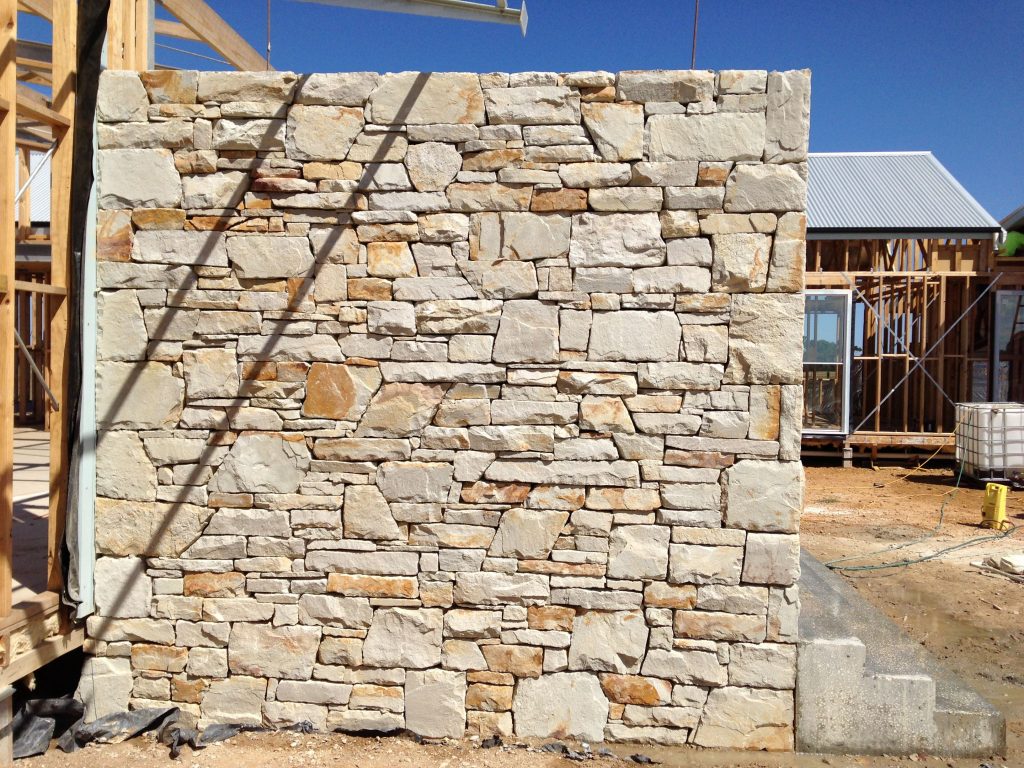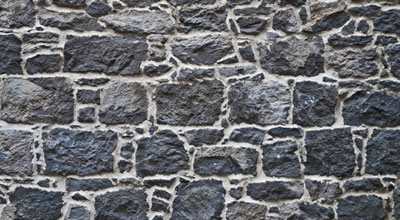Which Stone to Use for a Landscape Stone Wall
Stone walls have always been around but recently there has been a surge in desire to have a range of stone walls added to their landscape design. People want a stone wall for many different reasons whether it be aesthetics or practicality – but many people don’t know what stone to utilise in the first place.

Introducing a stone wall into your landscaping project can be a bigger process than some lead to believe. Discussing with your landscape designer to find out what would suit the project best, and where to place it is essential. Establishing what your goal is whether for looks or practicality will determine your first step; choosing the stone.
Deciding whether your wall is going to be dry laid or wet laid will be the deciding factor in what stone to choose.
Wet Laid/Mortared Wall
A mortar stone wall is a solid standing wall based off of a concrete footing. The stone that you choose can be more flexible as the integrity of the wall is dependant on the mortar, and not free standing stone. The beauty of these walls are that they can be built at any size which is why mortar walls are used for not only walls, but benches as well surrounding fireplaces or other features. This is why mortared walls are considered both practical and aesthetic.
Dry Laid Wall
Dry laid stone walls are more rustic than the wet laid, and generally are cheaper than wet laid due to smaller labour time and no footing. Your landscape designer may recommend this if you are in an are where there is high ground movement. This also limits your options on stones as there is only a certain range which are cut flat or square that will free stand without mortar.
Vaneer Walling
Vaneer stone walling is a relatively new concept and is very versatile for any form of stone cladding such as fireplaces, feature walls, retaining walls and more. The concept is that stones are cut flat and clad onto a flat existing wall. It gives a natural finish and can be either mortared or dry stacked much easier than genuinely building. It has a rustic look and can fit anywhere, although the price tag does turn some away.

In australia we have a diverse range of stones made to fit many shapes and sizes, but generally there are a few key types that are crafted to make whatever you desire.
Sandstone
Sandstone is one of the most popular stones, as it comes in large masses out of quarries. The colour ranges from white to a sandy tan. This is widely used as its cut into virtually any style you require.

Bluestone
Bluestone is a more diverse stone as theres a few different styles to choose from as the bluestone quarries vary very different, especially from state to state. Colours range generally from deep blues with rashes of earthy tones. Generally bluestone ages very well, and is incredibly durable.
Quartzite
Beginning as grains of stone which form sandstone, quartzite created by the pressure applied to these stones to make quartz, creating a very durable stone. It ranges in many colours, from blue-grey, off-white or even a sandy colour.

With these aspects and knowledge, we recommend sitting down with your landscape designer and discuss what would work best for your project and think about what you want out of the wall.
